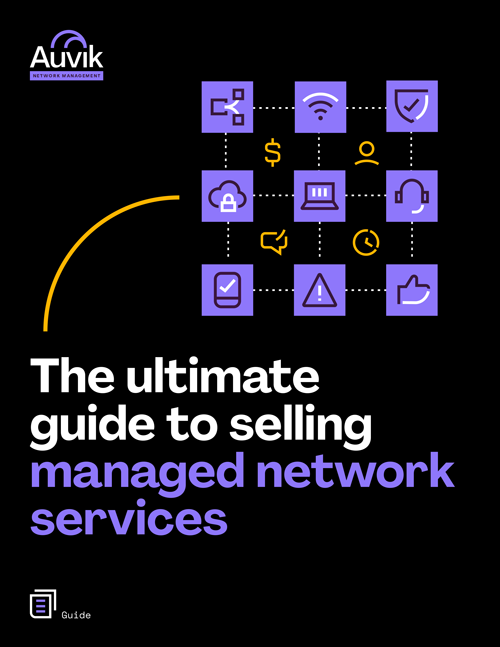State and local governments have always had to get a little creative when it comes to efficiently managing the government IT budget—they have to ensure they can stretch those dollars as far as they’ll go. However, inefficient network management practices are only adding to the challenges of local government IT modernization, and sucking the life out of their information technology budget.
Let’s look at some of the issues pressing on state and local government budgets, and what sort of best practices can help every dollar work just a little bit harder.
Federal government IT funding is missing in action
According to Statista, The total US federal government IT budget for 2022 is $58.44 million. This figure does not include defense or other classified government IT spending.
No, we didn’t miss a few zeros. This is a laughably small information technology budget. To put things into a little perspective:
- 2020’s federal budget contained $200 million dollars for the upkeep of San Francisco’s Presidio Park. This is separate from any state or city-level funding the park already receives.
- Since 2014 the federal government has been holding onto approximately 77,000 unused and underused buildings across the country. The cost of maintaining these buildings, which is necessary to ensure they don’t become a hazard, rose to approximately $1.7 billion per year.
Leaving the opinions aside, the results are still clear: individual states and local governments are repeatedly forced to find money in their budgets to maintain most public networks on their own. They have to implement more efficient government IT solutions to fully capitalize on their limited budgets, such as investing in additional automation management tools to better handle the workload.
A common problem that IT staff across all sectors experience is that stakeholders often have limited vision. In other words, in an attempt to save money in the short term, they waste it in the long term. For lack of a better term, a lot of government IT and network monitoring budgets are being inadvertently wasted.
Unsurprisingly, the coronavirus pandemic and the associated shutdowns made things even worse. According to estimates, at the height of the pandemic, local and state revenues declined by as much as $1.75 trillion per year.
As restrictions ease the economy will recover, although that recovery might be slower than anticipated considering the record inflation levels. In February 2022, inflation reached 7.9% year-over-year—the highest since 1982.
And yet, the world marches on. An ever-increasing number of people are still connecting to local and state networks to do their business.
Government workers weren’t exempt from remote work either, placing even more strain on these networks, making IT modernization practically a necessity as government network issues skyrocket.

Why automate when you can do it manually?
It’s cheaper to do things yourself, right? This erroneous strategy leads to a lot of wasted dollars, as government IT departments are expected to perform a slew of tasks manually. After all, isn’t it less than investing in a network management and monitoring solution that would automate many of these activities?
In the extremely short-term, that might be true. However, the picture starts to look a lot different when you begin to consider the number of hours staff are wasting on performing these tasks manually, along with the loss of productivity and even more staff time associated with the inevitable errors repetitive manual tasks lead to.
Manual network device configuration
For example, IT staff have to manually configure network devices one at a time. Considering the size of many of these networks, this can take a lot of time. Time that could have been better used on high-level tasks. Time that could be saved by using an effective distributed network management solution that could perform configurations in a fraction of the time.
Don’t discount that an automated solution would virtually eliminate human error. When configuring devices manually, mistakes are far more likely to propagate across your network. They might not even be noticeable at first, but eventually, as these errors compound, the network’s performance suffers significantly.
As performance declines, complaints increase and productivity suffers, which means IT staff have to fix the problem. That means more time is wasted as IT personnel has to hunt down the issues, and they have to do it the hard way.
Manual Backups
Another government IT budget suck is the lack of automation for a variety of low-level tasks, specifically manual backups of critical data.
Manual configuration backups for network devices are time-consuming. As a result, it is not unusual for them to be delayed. In fact, in some cases, the backups end up being put off indefinitely. Then the unexpected happens.
An act of nature could occur, killing a critical network device. Without config backups, the configuration for that new piece of kit will have to be re-created from scratch, meaning a potentially more extensive downtime for the network and more wasted man-hours.
Now, what if that act of nature took out an entire server room? Bet you wish those backups were up to date now.
Backups are just one task to consider. Today, city-wide networks are growing fast, through the proliferation of devices, and the expansion of connected citizen services. As a result, many low-level tasks, like documenting network assets, warranties, and compliance audit concerns, become critical to maintaining network infrastructure and service delivery.
High MTTR means high costs (for no reason)
Mean time to resolution (MTTR) refers to the average amount of time it takes to completely resolve any failure, from the time taken to detect it to ensuring a repeat won’t occur. When MTTR is too high, this means extended poor network performance or increased downtime, resulting in a significant overall loss of productivity.
A variety of factors can contribute to a high MTTR, but a chief contributor is limited network visibility. Most government agencies at the state and local levels lack robust, unified network monitoring capabilities for hybrid networks, making detection far slower than it should be.
Another issue is the broad mix of different hardware from different vendors that also have to work with legacy equipment that isn’t all that friendly with newcomers. The results are often disastrous, especially since IT staff rarely have access to network management and monitoring tools that are vendor agnostic.
Finally, the limited government IT budget and lack of effective change management means that networks haven’t been modernized sufficiently to keep up with the changing environment. In other words, the spike in new users is placing a lot of strain on “older” networks, making it challenging for them to keep up.
Legacy networks are a critical challenge to achieving government IT modernization. A network is only as good as its least efficient components. If “irreplaceable” parts of your network are incapable of handling the current load, optimization of any other part is pretty much pointless.
Aging and outdated hardware that is prone to outages isn’t helping the situation. Clearly, SLGs are eager to achieve complete government IT modernization and reap the benefits, such as reduced costs and increased efficiency. Not to mention the fact that no one wants to work with systems that have long outlived their usefulness, effectiveness, or manufacturer support.
Stretch that government IT budget!
So what can IT teams at state and local governments do? Is begging for increases to the government IT budget the only solution? Of course, that would be ideal, but it’s unlikely. Even if it were possible, it’s still imperative to implement best practices to reduce waste. Here are some strategies we recommend.

Increase automation
This one is an easy win. An increase in automation can significantly reduce waste on multiple levels. First, it frees up the IT staff to focus on critical tasks instead of wasting time with low-level activities. It also means less money wasted on expanding IT teams because the current staff will be far more efficient.
Automation reduces the risk of human error, reduces MTTR, and improves network performance.
Here are some examples of tasks that can and should be automated:
- Network documentation. Efficiency increases significantly when IT teams and key stakeholders can quickly access and share accurate network documentation and data. Unfortunately, automatic network documentation is rarely a priority, but it should be. What if the IT team cannot locate the information they need quickly in a crisis? And when they do find it, what if it isn’t accurate?
- Backups. Implementing automated backups saves money by eliminating the time IT staff would waste creating manual backups. It also ensures that those backups exist so that they are available when needed. After all, reconfiguring a device using a backup is much faster than having to do it from scratch.
- Network Monitoring. Proactive network monitoring involves continuously overseeing the network’s performance and operation to identify potential risks. As a consequence, issues are far less likely to become emergencies. Automated monitoring is always-on, and alerts your team the moment something goes wrong.
Get started with remote management
Beyond automation, local and state governments should consider remote management solutions. Essentially, such a solution allows IT staff to handle network management and system maintenance without having to be constantly on-site, or spending time moving between multiple sites.
It might not seem like much, but the costs do add up, especially when one considers lost time. Whether you’re under mandatory stay-at-home orders because of a global pandemic, in the middle of a surprise snowstorm, or sleeping cozily in your bed 60 miles away, being able to access the network remotely makes life infinitely easier, time spent wiser, and money saved for better projects.
Find one solution to rule them all
When one considers the challenges of local government networks, it becomes apparent that implementing automation and remote management requires a robust solution.
A remote management platform has to offer a wide range of features, including things like network discovery tools and automated backups. However, it also has to be able to handle networks that are a mishmash of legacy equipment and devices sourced from a variety of vendors.
Auvik provides one of the most capable networks monitoring and management software systems for state and local governments. From ticking all the best practices for going further with your government IT budget to bringing all your needs under one pane of glass, find out for yourself what Auvik can do for your network.
Your Guide to Selling Managed Network Services
Get templates for network assessment reports, presentations, pricing & more—designed just for MSPs.






